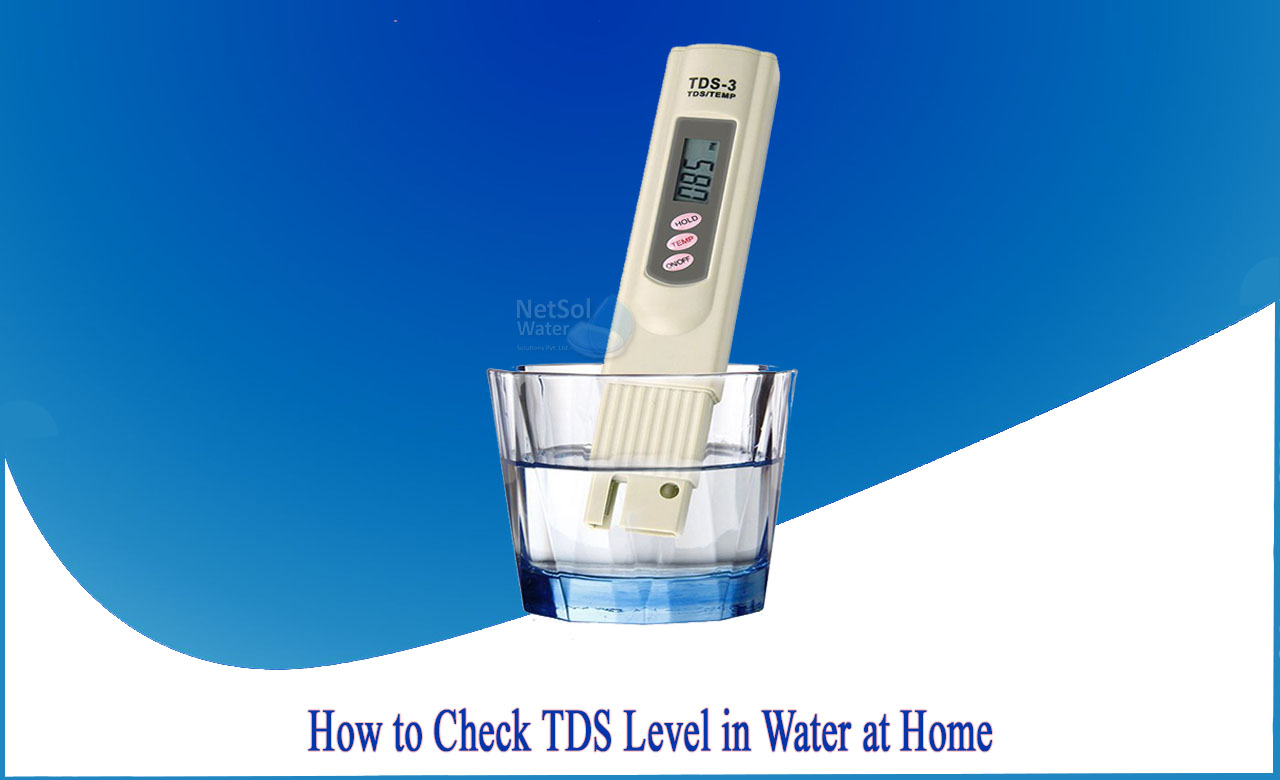INTRODUCTION
TDS, or Total Dissolved Solids, is a widely used term that refers to the concentration of dissolved particles or solids in water. TDS contains inorganic salts such as calcium, magnesium, chlorides, and bicarbonates, as well as inorganic compounds that dissolve in water. Water that tastes salty and unappealing is likely to have a high level of TDS.
Water with high TDS levels becomes difficult to consume unless it is purified. The solids dissolved in water may be harmful to your health and should be filtered before consumption.
HOW TO CHECK TDS LEVEL IN WATER?
1ST METHOD: DIGITAL TDS METER
This is a cutting-edge digital TDS metre tester that you can use to test the performance of your water filter, the quality of filter water, hardness, and to ensure that you are drinking clean water. Digital TDS metres are widely available on all of India's leading online stores.
STEP 1: MEASURE THE TEMPERATURE OF THE WATER:
· Turn on the metre.
· Activate the TEMP button. The temperature will only be shown in Celsius.
· Press the TEMP button once more to return to TDS mode.
STEP2: MEASURE TDS LEVEL, FOLLOWING THE GIVEN INSTRUCTIONS
· Take off the protective cap.
· Turn on the TDS metre. The ON/OFF switch is located on the panel.
· Immerse the metre up to the maximum immersion level in water (2 inches).
· To dislodge any air bubbles, gently shake the metre.
· Wait until the reading has stabilised (approximately, 10 seconds).
· To view the reading, press the HOLD button and lift it out of the water.
· If the metre displays the 'x10' symbol, it means that the reading must be multiplied by ten.
· Shake off any excess water from your metre and replace the cap after use.
2ND METHOD: USING FILTER PAPER AND A SCALE
This is a traditional method for measuring the level of TDS in your drinking water that you can easily do at home. You don't need a TDS metre for this, just some common household items.
THINGS NEEDED IN THIS:
· A clean beaker.
· In the beaker, a sample of water (tap water or rainwater).
· Use filter paper.
· A dish for evaporating water.
· A stick for stirring.
· A pipette large enough to collect a 50ml water sample.
· A measuring scale.
FOLLOW THE INSTRUCTIONS
Step 1- Weigh the evaporating dish in milligrams and ensure that it is completely empty and free of any particles. Make a note of this measurement as "A" and return to it once all of the steps have been completed.
Step 2- Using the stirring stick, vigorously stir the water sample in the sterilised beaker. You must agitate the liquid to ensure that the particulate matter in the beaker is evenly distributed.
Step 3- Using a pipette, collect 50ml of the stirred water. Please keep in mind that you must continue stirring the liquid even while collecting the water.
Step 4- Using the pipette, extract water and pass it through the filter paper three times. Sediment will be left behind in the filter paper.
Step 5- Transfer any particles found in the filter paper to the evaporating dish.
Step 6- Allow the filtrate (particles) to dry completely.
Step 7- When the filtrate on the evaporating dish is dry, weigh it again (with the filtrate) and label it "B."
Step 8- Subtract B from A to calculate the TDS level.
Netsol Water is Greater Noida-based leading water & wastewater treatment plant manufacturer. We are industry's most demanding company based on client review and work quality. We are known as best commercial RO plant manufacturers, industrial RO plant manufacturer, sewage treatment plant manufacturer, Water Softener Plant Manufacturers and effluent treatment plant manufacturers. Apart from this 24x7 customer support is our USP. Call on +91-9650608473, or write us at enquiry@netsolwater.com for any support, inquiry or product-purchase related query.



